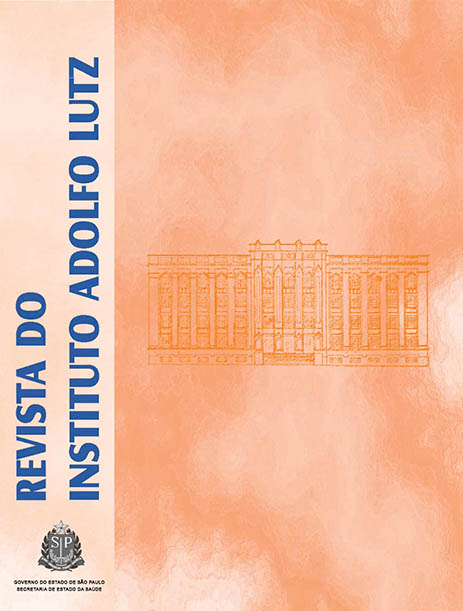Abstract
The globalized agribusiness, increasingly competitive, requires safety with a focus on health legislation before healthy food to consumers. In this scenario, the control of Ochratoxin A (OTA) in grape-derived products, with emphasis on wine is already a reality in the European Union, whose continuous monitoring should be performed using reliable and accessible methods. In contrast to the imminent launch of biosensors, capable of making rapid analysis in situ the Brazil is still dependent on analytical imported kits, which cost restricts the broad monitoring in routine of quality control. Whereas, immunochemicals methods such ELISA, is the basis for technological advancement - biosensors, proceeded from the cultivation of hybridoma OTA.1 in synthetic medium, aiming production of immunoreagent. The monoclonal antibody (MAb) IgG anti-OTA obtained was applied in the development of indirect competitive ELISA (ic-ELISA) and immunoaffinity column (IAC). Cultivation of hybridoma OTA.1 initiated in RPMI medium with 10% of fetal bovine serum was gradually adapted until 100% of the H-SFM (Hybridoma Serum-Free Medium). The mAb with higher purity showed titer of 1:10,000, analyzed by ic-ELISA being used with the OTA-BSA conjugate at a dilution of 1:30,000. Intra-laboratory validation was carried out, proceeding with comparison to HPLC analysis of OTA in red wine (RE), rose (RO) and white (WH). The parameters evaluated were the detection limit (0.17, 0.15 and 0.14 ng ml-1 for RE, RO and WH respectively), quantification (1.29, 0.91 and 0.64 ng ml-1 for RE, RO and WH), accuracy (average recovery of 90.6%, 89.2% and 89.6% for RE, RO and WH), linearity, precision evaluated in terms of repeatability (RSD of 9.41, 8.01 and 9.29%, respectively for RE, RO and WH) and intermediate precision (RSD of 15.81, 12.66 and 12.65%). The maximum standard uncertainty was calculated for three contamination levels of OTA (0.5, 2 and 5 ng ml-1), obtained 26, 25 and 24% to 0.5 ng ml-1 for RE, RO and WH, respectively, and uncertainty of 20% for OTA levels of 2 and 5 ng ml-1 for the three matrix.The ic-ELISA developed showed correlation of R= 0.975 with HPLC analysis of 14 positive samples, out of 70 commercial wines (47 RE and 23 WH). Consequently, HPLC detected positivity in 14 samples, divided into 10 RE (0.14 to 0.99 ng ml-1) and 4 WH (0.33 to 0.90 ng ml-1). The ic-ELISA detected 12 positive samples, divided into 8 RE (0.26 to 0.86 ng ml-1) and 4 WH (0.29 to 1.12 ng ml-1). In parallel, IAC based on support activated Affi-Gel 10 was prepared with mAb IgG obtained from cultivation at 75 and 100% H-SFM (1:1) at concentrations of 5, 10 and 20 mg of IgG /mL of gel; the IACs developed were called IAC 5, 10 and 20, respectively. Comparing the efficiency of ethanolamine and glycine in the capping post-immobilization of IgG (end-capping), both showed similar results. The ethanolamine was chosen to continue the standardization, because of lower cost, resulting in immobilization efficiency of 86.43% to IAC 5; 85.18% to IAC 10 and 88.50% to IAC 20. Next, the capacity of retention of toxin by the column was evaluated by applying 20 ng of OTA; IAC 5 retained 72.08%, IAC 10, 76.85% and IAC 20, 67.20% of OTA. The specific activity was 6.54 ng of OTA retained/ mg of IgG immobilized to IAC 5, 3.58 for 10 IAC and 1.50 for IAC 20. The IAC 10 and IAC 5 recovered OTA with similar effectiveness at concentrations between 0.5 and 15 ng in PBS-1% sodium bicarbonate (p <0.05). The IAC 5 was chosen to proceed the intra-laboratory validation by comparing with IAC commercial. Was evaluated the recovery rate of OTA in red wine (RE) artificially contaminated; 10 detection of OTA in naturally contaminated wine and reusing column. The effectiveness of IAC 5 was compared with IAC commercial, evaluating the recovery efficiency of OTA in red wine spiked (0.5, 2, 5 ng ml-1). The IAC 5 recovered 80.5% of OTA in spiked wine with 0.5 ng ml-1 compared to 77% of recovery obtained by IAC commercial. RE spiked RE with 2 ng of OTA ml-1, the recovery achieved by the CIA 5 was 76.87% against 86.14% for CIA commercial. Spiking with 5 ng OTA ml-1, the CIA 5 recovered 76.75% 84.97% for the CIA commercial.However, was not found significant difference between IAC developed and commercial in recovery rate for tested concentrations (p <0.05). Assessing the applicability of the IAC developed against 14 naturally contaminated samples (10 RE and 4 WH). The high correlation observed between IAC 5 and IAC commercial (R = 0.954) confirms the applicability of immuno tool developed with Affi-Gel support for the control quality of wine. The column regeneration was evaluated in order to reuse carrying five consecutive determinations for three concentrations of OTA (0.5, 2 and 5 ng ml-1 of wine). The IAC 5 presented the possibility of reuse after two regenerations, demonstrating applicability in red wine for up to three uses. Summarizing, the high specificity of mAb produced by hybridoma OTA.1 reaching title of 1:10,000 fill up the essential condition requested by development of biosensor, which coupled with the stable OTA-BSA conjugate at working-dilution factor of 1:30,000 by ic -ELISA, would be a promising reagent to engage into sensitive biotool. Therefore improvement on production technology concerning immunoreagents should be continued, taking to account its strategic status within the background of nanobiotechnology.
This work is licensed under a Creative Commons Attribution 4.0 International License.
Copyright (c) 2011 Instituto Adolfo Lutz Journal
Downloads
Download data is not yet available.
